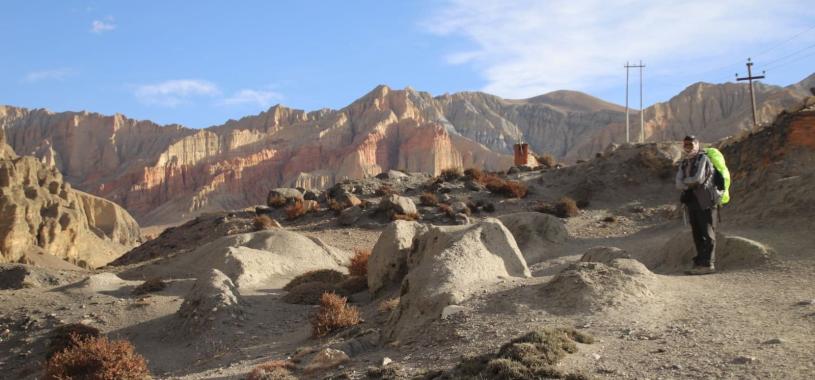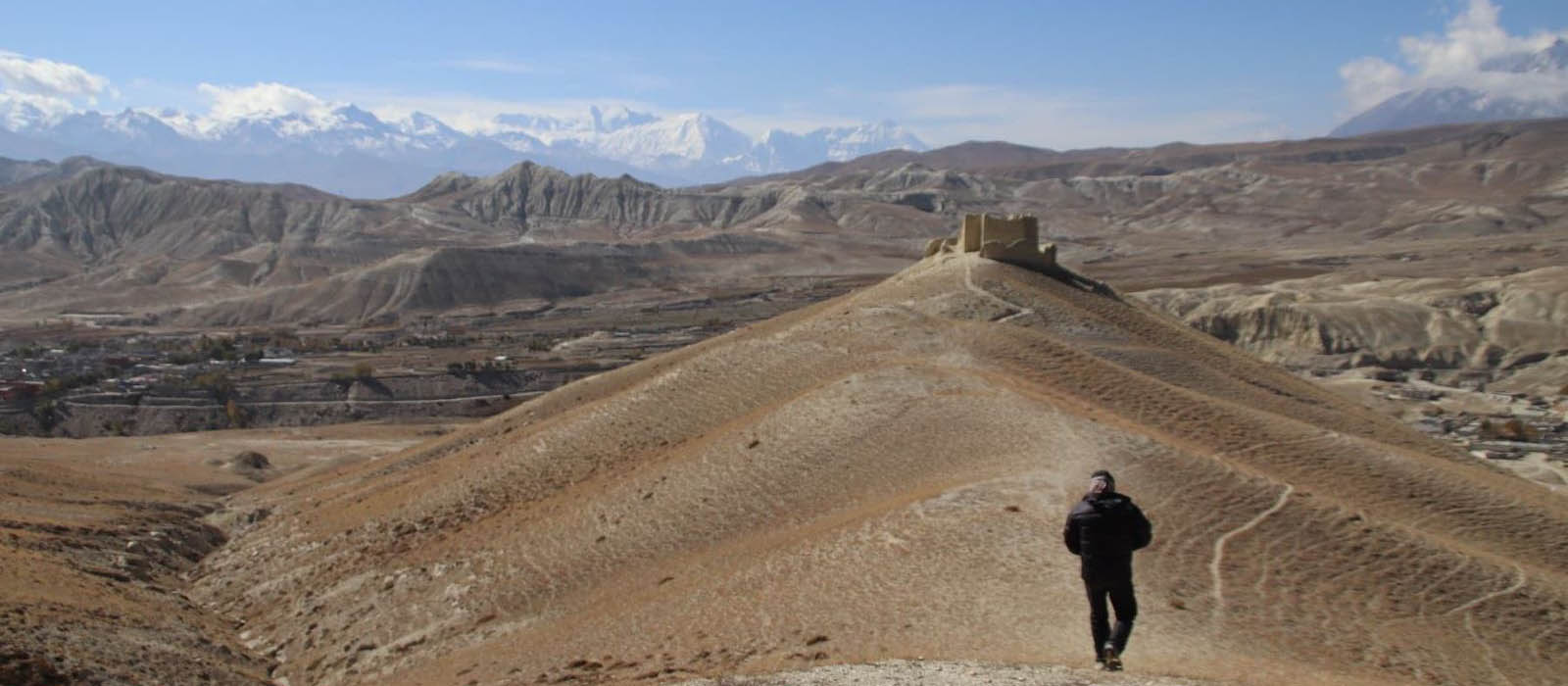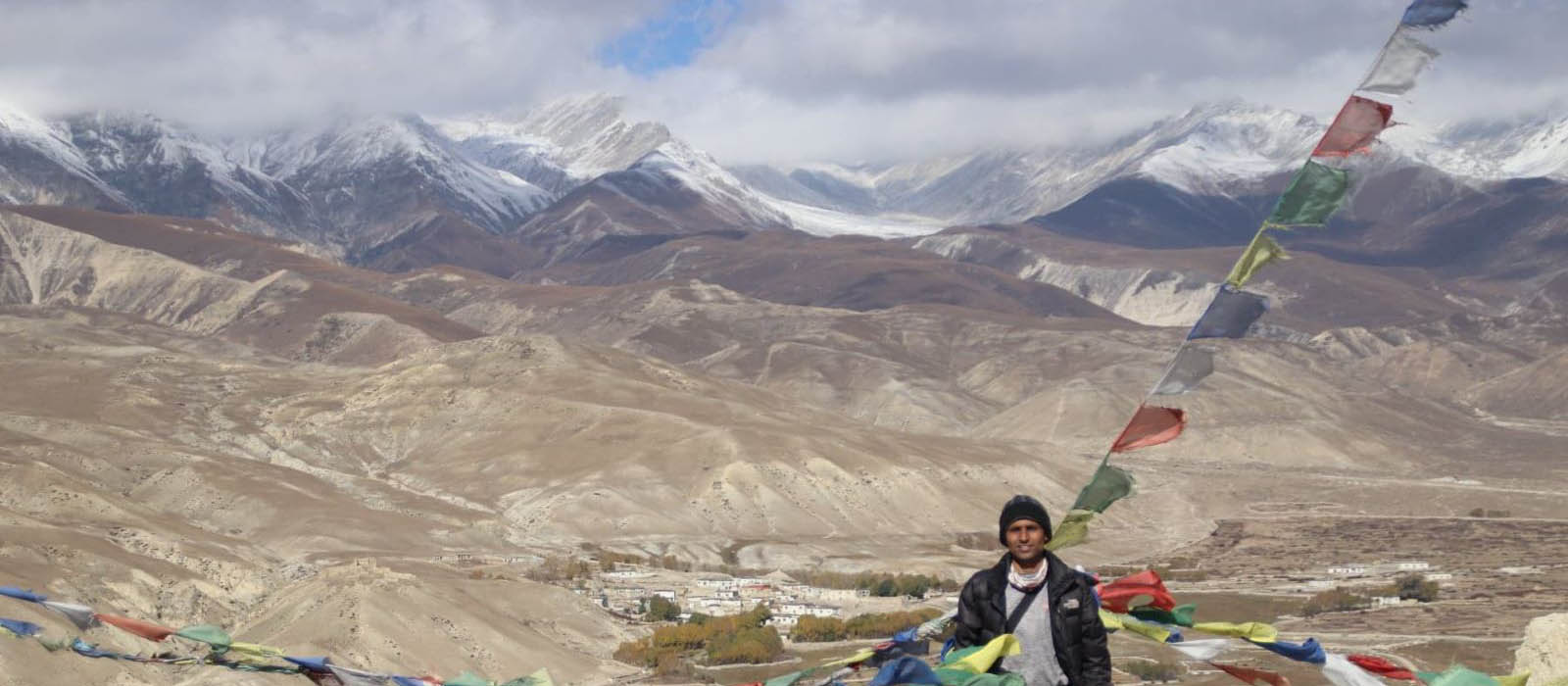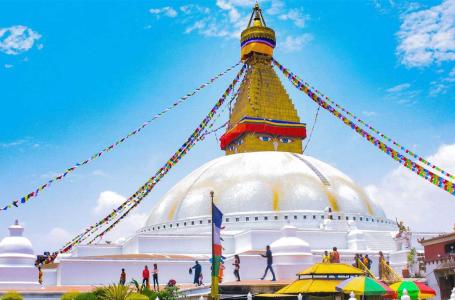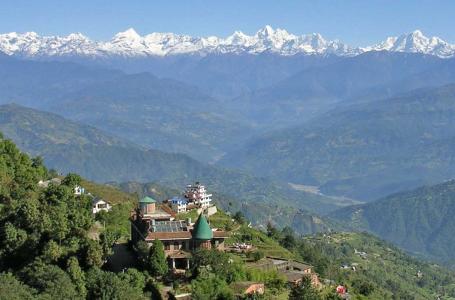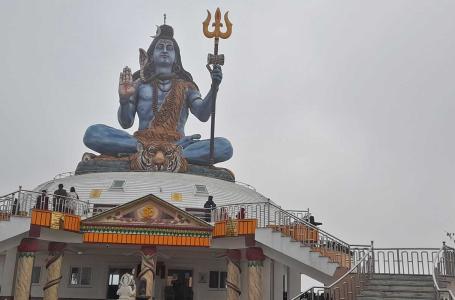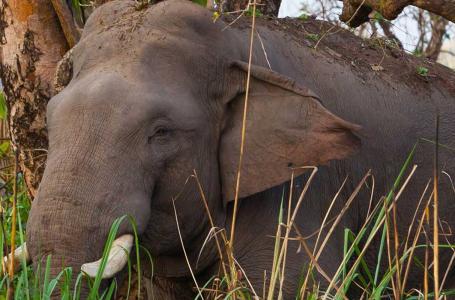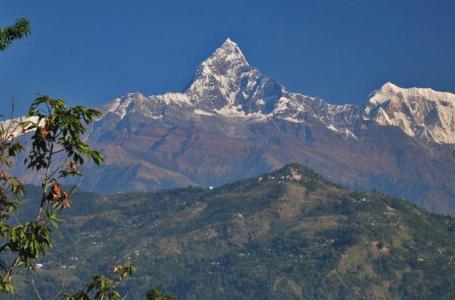- 01Pax USD 1250 pp
- 02 to 05Pax USD 1125 pp
- 06 to 10Pax USD 1010 pp
- 11 to 15Pax USD 950 pp
Itinerary
The Bus to Pokhara leaves early in the morning from Kathmandu. It will go along the winding highways through several hilly settlements before arriving at Pokhara.
Although the distance between Kathmandu and Pokhara is just 200 km, it takes around 7 hours or more to cross that distance. The primary reason for this delay is the road condition. But, sometimes, the traffic jams in the middle places make the delays worse. Despite that, it is a fun journey that keeps you close to nature.
You may as well catch a flight to Pokhara or hire a private car or Jeep.
From Pokhara, catch the early flight to Jomsom, a fabulous place to shop for souvenirs and handicraft items. Then, start your trek to Kagbeni. Just as you leave Jomsom, a new and imposing monastery bids the warm wishes.
Within a while, a linear chain of Chortens (little Buddhist Shrines) appears, directing you toward the wonderful town of Kagbeni. Walk until you arrive at the Eklobhatti, and join the trail leading to Kagbeni. Once you reach there, you will feel a completely different environment. There are classic alleys and monasteries to explore, but above all, their Tibetan-inspired cultures and traditions are more intriguing.
From Kagbeni, catch a side-trip trekking route to Jharkot. Even in this part of the trail, the Chortens and small monasteries are ubiquitous. Sometimes, the Mani walls (prayer-inscribed stones) flavor the trip, but it is mostly the prayer flags, wrapped around the houses and pathways, that form a welcoming atmosphere.
Once you arrive at Jharkot, explore the local villages and farm fields to experience the unspoiled cultures of ancient times. Plus, don’t miss out on the chat with the seniors of the village. This is how you get real-life experiences.
From Jharkot, Muktinath is not very far away. Once you reach there, explore the serene lakes on the side of the temple. They are calm and peaceful. Pilgrimages could be seen diving into these oases by chanting the Mantra of Vishnu. Inside the temple, there are 108 stone taps, where the water naturally comes from the underground, mixed with the natural gas.
An eternal flame is the symbol of peace and living cultures of Muktinath. In the core of the temple, a large man-sized golden statue of Lord Vishnu is simply phenomenal. Hindus show deep respect for the temple as it’s believed to be the site of Liberation (Mukti) after death.
From Muktinath, follow the lower route via Ranipauwa towards the village of Lupra. A big Shiva Temple shows you the path to the wonderful monastery of Ranipauwa, which is a colorful and vibrant village. Then, by crossing a bridge, you will walk to the Dhan La. Follow the trail straight to the west until you reach Lupra, a classic Bon settlement of amazing people.
The major highlight of this village is the Bonpo Gompa (monastery) and the Thakali village. Unlike other Buddhist-dominated regions, Lupra people have their distinct way of living the lifestyle. They are humble and gentle people, who are happy for what they have.
From Lupra, catch the middle way to the village of Phalyak. Once you arrive at the bank of the Kaligandaki River, continue towards the confluence point of the river where several small tributaries fuse to form a rapidly gushing Kaligandaki River.
Cross a bridge and then, walk parallel to the Kolungba Khola, originating from the Tashikang peak and its surrounding glaciers. Within a short while, you will be at Phalyak, a rarely explored pristine village of the Mustang region. Because of the isolation of the village from the main route, only a few put their eye on it. This place is perfect for enjoying the unblemished Tibetan cultures and rituals.
From Phalyak, catch the side trip trekking route to Jomsom (as highlighted in the Upper & Lower Mustang map of Himalayan Map House. The path is pleasant as the browny mountains keep tracking your footsteps. Still, on this isolated section, you will encounter some Chortens on the way, wrapped by the prayer flags.
This shows the influence of Buddhism in higher regions of Nepal. Within a couple of minutes, you will show up at Hadigaon, after crossing a bridge. Then, continue towards the Thinigaon.
Go for an hour of a side trip to Dhumba Tal, the exquisite lake to release all the worldly tension. The water is pristine and has been untouched for centuries. Enjoy the moments at the lake and return to Thinigaon.
From Thinigaon, the route to Chimanggaon goes through the incredible stone settlements. The place is exquisite, and the alleyways are formed by placing the flat stone slabs below. The people of this village are also called Chimba.
Most of them are Buddhists, so you may as well get an insight into their lifestyle and cultures. Young kids of the village will come after you for a photograph and they look amazing ahead of the mountains. Take time out to visit the Tibetan Refugee Camp, where they sell their handmade handicraft items and souvenirs.
From Chimanggaon, descend to the Kalapani. The more you progress on the trail, the better the views become. The snowy pinnacles, rising above the northeastern Himalayas, accompany throughout the trail, particularly the peaks of Dhaulagiri and Nilgiri (meaning Blue Ridge).
The path is completely off-the-beaten and leads you through some of the exquisite locations on the planet. Once you arrive at Kalopani, stroll around the villages and monasteries as it is fun doing that.
From Kalapani, Titi Gaon is not very far away. Explore the nearby settlements, and visit the exquisite Titi Lake, perched on the center of snowy pyramids. The lake is turquoise in color, but when you peek into the water closely, you will see the bottom matters distinctly.
At a glance, this lake looks typically like the Gokyo lakes in Everest, but this place is much greener and vivid in many ways. Around the periphery of the lake, you can witness several distinct species of insects and birds. For the night, stay in the homestay houses.
From Titi, proceed towards the Larjung along the classic routes. The Larjung is just a couple of Kilometers away from Titi. Upon reaching there, a whole mountain series of Dhaulagiri welcomes you. Larjung is one of the least explored natural sites of the Mustang region, which is pure and aesthetic in its own way.
With the charming views of the massive hills and rocky cliffs, Larjung has remained the unspoiled heritage of the Upper Mustang. People of this region are mostly Buddhists, and mountains inspire their daily living.
Sparing a day at Larjung is worthy of every second. From the incredible Kaligandaki gorge to the unparalleled classic views of the Dhaulagiri range, the secrets of the Himalayas are no longer hidden from the charming Larjung village.
After having a light breakfast, head towards the icefall point of Dhaulagiri. Seeing the icy structures arranged in such an elegant way, your eyes remain awe-struck. They are simply fabulous spots on Earth.
After creating some of the exquisite and living memories at Larjung, head towards another wonderful village of Marpha. At a glance, Marpha looks like a rainbow, but all of the same colors- black. The houses are stone-made, and the flat slabs, placed on the alleys, create an intriguing atmosphere.
From this village, the astounding peak of the Nilgiri dominates the views and they appear simply fabulous. At Marpha, explore the local hamlets and spend some time talking with the locals.
Early in the morning, we will head towards the ancient but culturally rich Jomsom village where the hustle and bustle of the local people are usual throughout the day.
There are several souvenir stalls and handicraft vendors if anybody is willing to get some of them for friends and families. Plus, there are many more aesthetic monasteries to visit and learn about the ancient culture of Tibetan people- both Bon and Buddhists.
Catch the early morning flight to Pokhara from Jomsom and spend rest of the time exploring the natural sites of Pokhara. It is a lot of fun doing that.
Return to Kathmandu from Pokhara via the same trail that you have been earlier.
Overview
Beyond the classic routes of Mustang, the mountains hide several exquisite viewpoints and traditional hamlets, offering pristine views of the incredible snow-tops. The houses look like typical stone masonry, and the settlements are lined up in an arch-like fashion as in terraces. There are outstanding lakes, and exceptional landscapes to see even in the least rewarding trails. What’s more, from the beginning of the trek to the end, the path goes through a series of Chortens, Mani walls, Monasteries (Gompas), Prayer wheels, and Prayer flags.
The name ‘Lower Mustang Trek’ comes from the cultural luxury of the Mustang region. You will stay in the traditional houses in a way that other people live and enjoy the astounding scenery behind the windows. There is nothing like Royal palaces to visit, but exploring the pristine temple of Muktinath, with a man-sized golden statue of Lord Vishnu, is far better than any other exploration. The busy markets of Jomsom and the tranquil village of Larjung are the remaining highlights of the trek.
Lower Mustang Trek is easier to do except for the few challenging sections. Beginners can really get inspired by the mountains, so this trek is recommended for them. Lower Mustang Trek is good to go at any time throughout the year because the rain of monsoon cannot pierce through the rain-shadow Mustang and the chills of winter are not so extreme. Nevertheless, it is better to avoid winter.
Planning:
Planning a trek to the Lower Mustang region in Nepal can be an exciting adventure, but it's essential to prepare thoroughly to ensure a safe and enjoyable journey. Determine the length of your journey. A typical Lower Mustang journey lasts 10-14 days. Make a plan for your trip, including hiking days, rest days, and major sites to visit (such as Lo Manthang, Ghami, Charang, and Kagbeni).
Physically prepare for the expedition by doing aerobic activities, trekking, and strength training. Because of the great altitude, acclimatization is essential. Spend a few days in Kathmandu or another high-altitude destination before starting the trip. Learn about the symptoms and prevention of altitude sickness. Acclimatization is critical, and knowing how to diagnose and handle altitude-related illnesses throughout the journey is key.
The Best time to do the Lower Mustang trek:
Spring (March to May) is one of the most popular times for trekking in the Mustang region. Skies are clear during this time and offer excellent visibility of the surrounding mountains, including the Annapurna and Dhaulagiri ranges. The rhododendron forests are also in full bloom, creating vibrant landscapes with colorful flowers.
Autumn (Sep to Nov) is another excellent time for trekking in the Mustang and is the peak trekking season in Nepal. You'll encounter fewer rain showers and less chance of landslides compared to the monsoon season. During this season, the skies are clear, providing stunning views of the Himalayas ranges.
Monsoon season and Summer Season (June, July, and August) are highly not recommended for the Lower Mustang trek. Plus, the cold of the winter (December, January, and February) is unbearable for an ordinary trekker.
Food and Accommodation in Lower Mustang:
Mustang's accommodations are mainly simple tea houses or guesthouses. These are small, family-run lodges with rooms that have minimal amenities such as a bed, blankets, and common restrooms. The priority is on giving you a warm and pleasant place to relax throughout your journey. Mustang tea houses and guesthouses often provide a range of meals to keep hikers refreshed and satisfied. The menu options are fairly limited, yet they still offer a variety of possibilities. The quality of food and accommodation may differ as you ascend to higher altitudes.
But it is recommended to consult your guide for better and hygienic options.
Transportation:
Because the Lower Mustang trek usually begins in Jomsom, you must travel from Kathmandu to Pokhara for the Jomsom flight. You can travel to Pokhara by tourist bus or private car (6-8 hours) and will spend the night there. After spending the night in Pokhara, head to Pokhara Airport for your domestic flight (30 minutes) to Jomsom Airport. This short flight offers amazing views of the Himalayas but is weather-dependent. Our walk begins on foot when we arrive in Jomsom, and we will encounter a unique combination of history, culture, and natural beauty in one of Nepal's most interesting and engaging locations.
This journey normally concludes at Jomsom, where a flight back to Pokhara awaits you. From Pokhara, you may take a tourist bus or a private vehicle back to Kathmandu.
(Private vehicle requires extra charge as it is not included in this package)
Necessary Permits & TIMS:
When trekking in Nepal's Mustang region, you'll need numerous permissions to enter the restricted area and help conservation efforts. These licenses and TIMS cards can only be obtained through a licensed organization, and no freelancing guides are permitted to distribute them.
1. Annapurna Conservation Area Project (ACAP):
ACAP is a special permission necessary for visitors to visit the Annapurna Conservation Region in Nepal since it is a protected region.
Cost: Nrs 3000 per person and no additional payment is charged for extra days.
Necessary documents for Permits:
- An original passport and current visa(valid for at least six months)
- A scanned copy of the passport-sized photograph(to be uploaded for Upper Mustang RAP's online form)
- One printed passport-sized photograph (required for an ACAP permit)
- Travel insurance papers (includes helicopter evacuation of up to 6000m)
Highlights
- Experience the roots of Lo Manthang.
- Explore several Gompas, Chortens, fluttering prayer flags, and tunnels.
- Get a firsthand look at Tibetan influence and local culture.
- Views of the Nilgiri, Annapurna, Dhaulagiri, and other mountain ranges.
- Breathe in the spirituality of Tibetans and monks with their prayer flags.
- Witness the daily lives and cultures of the locals who live in close quarters, such as Tibetans.
Cost Details
- Airport pickup and drop service
- Accommodation in Kathmandu (Hotel Chhimeki 2nights)
- All food during the trek (B, L, D included)
- Accommodation during the trek
- Transportation, Comfortable Drive from Kathmandu to Trekking Starting Point and Trekking Ending Point by Local Bus or Jeep or by car. (depending upon the price and group size )
- Government license holder English-speaking trekking guide.
- Guide salary, lodging, food and insurance
- Trekking permits:Annapurna Conservation Permit, and TIMS card
- First aid medical box.
- T-shirt, Duffel Bag, and Trekking Map with company logo
- Rescue Management Service
- All Tax
- Farewell Dinner
- All kinds of Drinks
- Visa fee to enter Nepal
- International flight tickets
- Extra night accommodation and meal costs in Kathmandu due to any change in the scheduled itinerary.
- Porters for carry badge
- All required trekking gear like sleeping bags and down jackets made available on rent.
- Travel insurance/ Rescue operation costs
- All personal expenses
- Tip for guides and porters
Equipment List
- Woolen shirts and thick sweaters.
- Jackets (Fiber or down).
- Waterproof jacket with hood or poncho.
- Tracksuit, Track shoes and Trousers.
- Thermal Underwear and Thermal Coat.
- 2 pairs of loose-fitting long shorts/ skirts.
- Pair of Gloves and sandals.
- Woolen hat and long-sleeved shirt.
- Lightweight walking boots.
- 2 pairs of thin socks and 2 pair of woolen socks.
- Snow glasses and sunglasses.
- Trekking Sticks and Duffle bag or kit bag to carry to gear while trekking.
- Some (small/large) plastic bags to separate clean clothes from dirty ones and some smaller plastic bags to dispose of garbage.
- Daypack bag to carry your personal requirements.
- Water Bottle, water purifying tablets.
- Towels, Umbrella (optional).
- Headlamp, Binoculars, Camera, trekking map and compass, reading materials, pencil, rubber, pen, notebook, and moisturizer for lips, face body
FAQs
The Lower Mustang Trek offers a blend of Tibetan-influenced culture, dramatic desert-like landscapes, and sacred sites, including the famous Muktinath Temple and the wind-carved cliffs of Kagbeni.
This trek takes you through rocky canyons, barren plateaus, apple orchards, and Kali Gandaki Gorge (the world’s deepest canyon), with breathtaking views of Annapurna and Dhaulagiri ranges.
Yes! This trek is ideal for beginners and cultural travelers as it has moderate altitudes, comfortable teahouse stays, and easy accessibility via road and flights from Pokhara.
The region is rich in Tibetan-Buddhist culture, with ancient monasteries, prayer wheels, traditional Thakali villages, and the revered pilgrimage site of Muktinath.
While Upper Mustang is more remote and requires special permits, Lower Mustang is more accessible, offering similar landscapes and cultural experiences without the additional restrictions.


